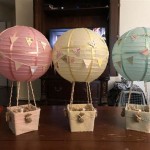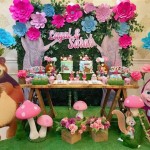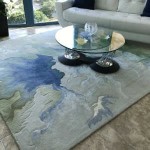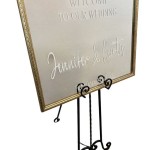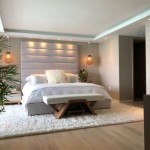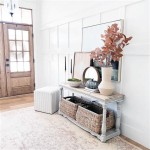Here is an article on decorating with baskets:
How To Decorate With Baskets: A Comprehensive Guide
Baskets, once relegated to purely functional roles, have emerged as versatile and aesthetically pleasing decorative elements in modern interior design. Their diverse shapes, sizes, materials, and textures offer a wide range of possibilities for enhancing both the visual appeal and organizational efficiency of any space. Integrating baskets into a decorating scheme requires careful consideration of the overall style, the intended function of the basket, and the existing color palette and textures within the room.
This article provides a comprehensive guide to incorporating baskets into home decor, exploring various applications, stylistic considerations, and practical tips for achieving a cohesive and visually appealing result. The emphasis is on understanding the unique properties of baskets and leveraging them to create a functional and attractive living environment.
Key Point 1: Functionality as a Foundation
Before considering the aesthetic aspects of basket decoration, it is crucial to define the intended function. Baskets are inherently practical, and their decorative value is often enhanced when they serve a purpose. Determining the functional requirements will guide the selection of appropriate sizes, shapes, and materials.
Storage is a primary function where baskets excel. Larger baskets can be used to store blankets, pillows, toys, or even firewood near a fireplace. Smaller baskets are ideal for organizing items on shelves, countertops, or in drawers. The key is to choose baskets that are appropriately sized for the items to be stored, ensuring a neat and organized appearance. For instance, a collection of magazines might be tidily contained in a tall, rectangular basket, while smaller, shallow baskets could corral toiletries in a bathroom.
Beyond storage, baskets can also serve as decorative containers for plants. Woven baskets provide a natural and textured alternative to traditional ceramic or plastic pots, adding a touch of warmth and organic appeal to indoor greenery. When using baskets as planters, it is essential to line the inside with a plastic or waterproof material to prevent water damage. Furthermore, consider the size and weight of the plant when selecting a basket, ensuring it is sturdy enough to support the plant's weight and prevent tipping.
Laundry is another area where baskets can provide both functionality and aesthetic improvement. A large, woven laundry basket is often more visually appealing than a plastic hamper, adding a touch of rustic charm to a bedroom or bathroom. Select a robust and durable basket with handles for easy transport of laundry. Consider the location; a bathroom might favor a moisture-resistant material, like plastic weave, over natural fibers that can be susceptible to mold.
Ultimately, the identified function of the basket must inform its selection. Prioritizing utility first ensures the basket enhances rather than detracts from the overall organization and flow of the space.
Key Point 2: Material and Style Considerations
The material and style of a basket significantly influence its aesthetic impact and suitability for a particular decorating scheme. A wide array of materials are used in basket making, each offering unique textures, colors, and durability characteristics. Choosing the right material is critical for achieving the desired look and ensuring the basket complements the existing decor.
Natural fibers, such as wicker, rattan, seagrass, and jute, are popular choices for baskets due to their warm, organic appearance. Wicker baskets, characterized by their woven structure, offer a classic and versatile look that complements a wide range of decorating styles, from traditional to bohemian. Rattan baskets, known for their durability and intricate weaving patterns, are often used in more formal or sophisticated settings. Seagrass baskets, with their distinctive texture and earthy tones, evoke a coastal or natural aesthetic. Jute baskets, typically characterized by a rougher texture and neutral colors, are well-suited for rustic or farmhouse-style interiors.
Beyond natural fibers, baskets are also made from synthetic materials like plastic, metal, and fabric. Plastic baskets are highly durable, water-resistant, and easy to clean, making them ideal for storage in bathrooms, kitchens, or laundry rooms. Metal baskets, often crafted from wire or mesh, offer a more industrial or modern aesthetic. Fabric baskets, typically made from cotton, linen, or felt, are soft and flexible, making them suitable for storing delicate items or adding a touch of texture to a space.
The style of a basket is also an important consideration. Baskets are available in a wide range of shapes, sizes, and designs, from simple utilitarian forms to more elaborate and decorative styles. Consider the overall style of the room and choose baskets that complement the existing furniture, accessories, and color palette. For instance, in a minimalist space, simple, geometric baskets in neutral colors might be preferred. In a more eclectic or bohemian space, baskets with intricate patterns, vibrant colors, or unique shapes could be used to add visual interest.
The proper selection of material and style is pivotal to ensuring the basket seamlessly integrates with and enhances the surrounding decor. A mismatch can result in a jarring or disharmonious appearance, undermining the overall aesthetic.
Key Point 3: Placement and Arrangement Techniques
The placement and arrangement of baskets within a room significantly impact their visual effectiveness and contribute to the overall flow and organization of the space. Careful consideration should be given to where baskets are positioned and how they are grouped together to maximize their decorative and functional value.
Baskets can be strategically placed on shelves, countertops, or floors to add texture and visual interest. When using baskets on shelves, consider varying the sizes, shapes, and materials to create a dynamic and visually appealing display. Avoid overcrowding the shelves; leave some empty space to allow the baskets to breathe and prevent a cluttered appearance. On kitchen countertops, baskets can be used to store fruits, vegetables, or bread, adding a touch of rustic charm to the space. On the floor, larger baskets can be used to store blankets, pillows, or toys, creating a cozy and inviting atmosphere.
Grouping baskets together is another effective way to create a cohesive and visually appealing display. When grouping baskets, consider varying the heights, shapes, and textures to create a sense of depth and interest. A general guideline is to arrange baskets in odd numbers, as odd-numbered groupings tend to be more visually appealing than even-numbered groupings. When grouping baskets of different sizes, place the larger baskets at the back and the smaller baskets at the front to create a sense of balance and avoid obscuring the smaller baskets.
Baskets can also be used to create focal points within a room. A large, decorative basket filled with colorful throws or pillows can serve as a focal point in a living room or bedroom. A collection of smaller baskets arranged on a wall can create a unique and eye-catching display. The key is to choose baskets that are visually interesting and strategically position them to draw the eye and add personality to the space.
Consider the sightlines in the room. Ensure the placement of baskets does not obstruct pathways or create visual clutter. Baskets should be accessible and easily used, rather than merely ornamental obstacles. Proper placement and arrangement transform baskets from simple storage containers into integral components of the room's design.
Lighting also plays a role in showcasing baskets. Positioning them near natural or artificial light sources highlights their textures and patterns, adding depth and dimension to the space. Under-cabinet lighting can illuminate baskets used for kitchen storage, while strategic placement near a window can enhance the natural beauty of woven materials.
By carefully considering the placement and arrangement of baskets, one can transform them from simple storage solutions into integral elements of the room's design, enhancing both its functionality and aesthetic appeal. Thoughtful placement ensures that baskets not only serve their intended purpose but also contribute to the overall harmony and visual interest of the space.

Tips And Tricks For Decorating With Baskets

Follow The Yellow Brick Home Easy Ways To Decorate With Baskets Indoors And Out

100 Basket Decor Ideas For Home How To Decorate With Baskets Storage

5 Creative Tips For Decorating With Baskets Stonegable

How To Decorate With Vintage Baskets In Modern Farmhouse

Decorating With Baskets And Trays A Stroll Thru Life

How To Decorate With Baskets For Fall Thistlewood Farm

Follow The Yellow Brick Home Easy Ways To Decorate With Baskets Indoors And Out

Simple And Practical Decorating Ideas For Thrift Baskets Pine Prospect Home

How To Decorate With Baskets Top 10 Home Decorating Ideas Houze

